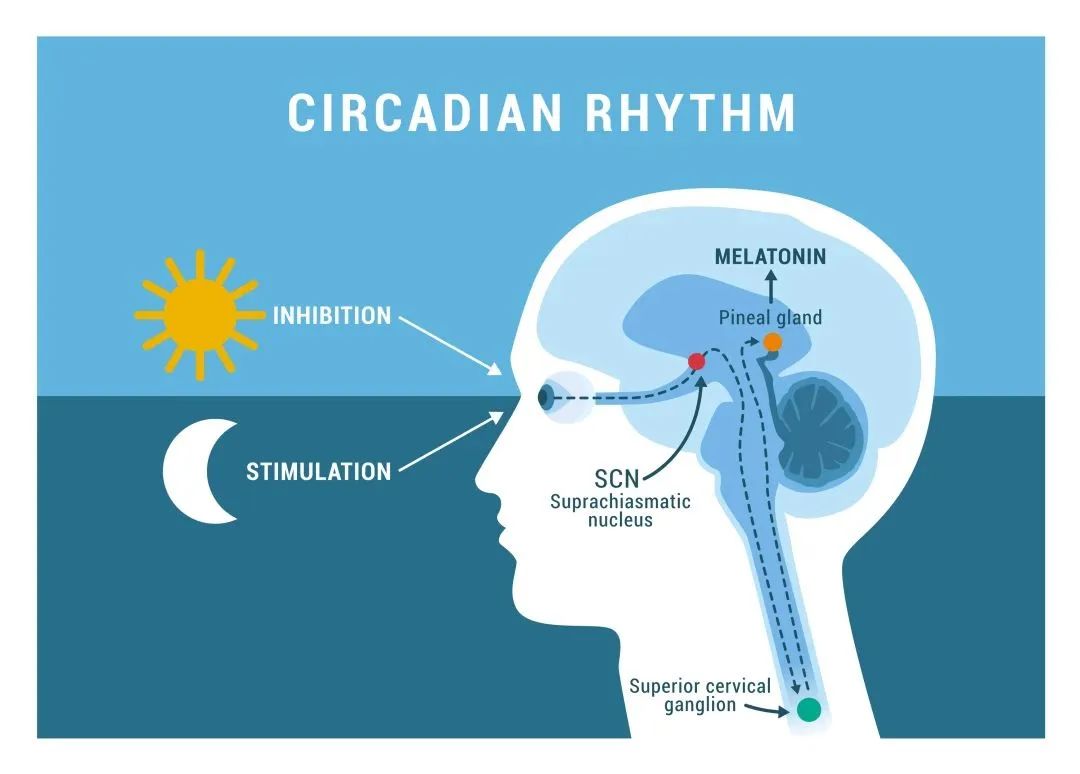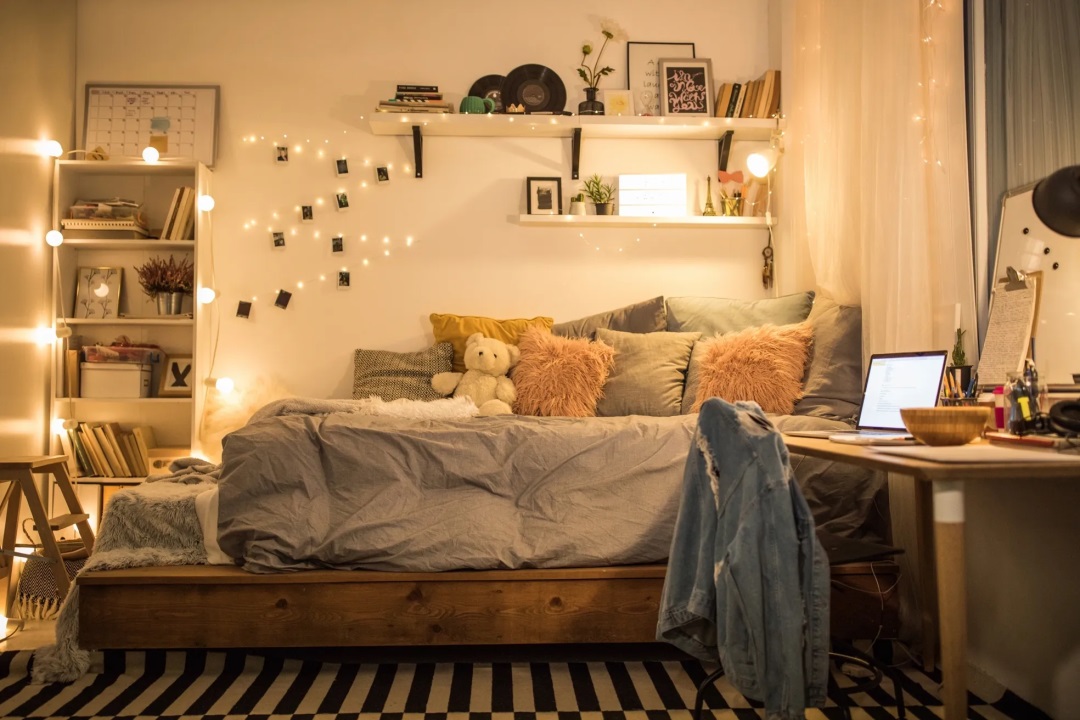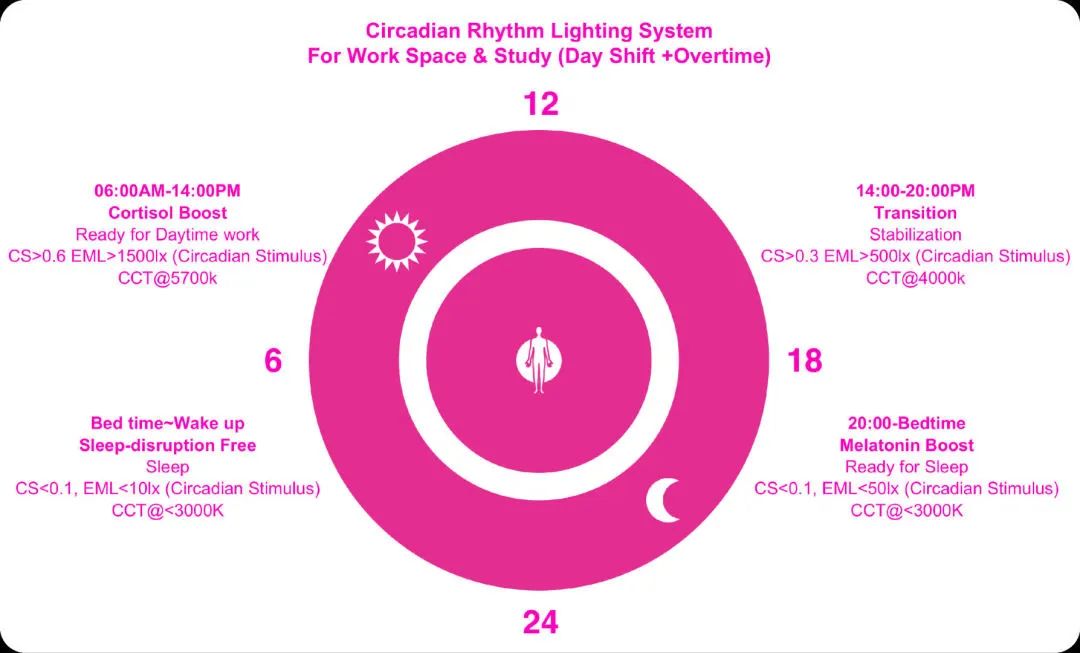照明業界に携わるすべての人は、色温度の基礎知識について学んだことがあると思います。色温度が低いと人は快適で温かみを感じ、色温度が高いと落ち着いた興奮を感じ、設計プロセスでもこの概念に従うことになります。
ただし、光環境の実際の健全性は、まぶしさがない、ストロボがない、照度、色温度、均一性に重点を置くだけでは十分ではなく、「等価ダークピクセル照度」の値が一致していることにも注意を払う必要があります。標準で。
「メラトニン」の概念を初めて認識する前に、この値を測定する方法について説明します。
メラトニン
何十億年もの間、太陽光は原始的かつ唯一の光源として機能し、事実上すべての生命体の内因性概日リズムを形成してきました。
人間が「日の出から仕事、日没から休息」という生産や生活ルールに従う理由は、人間の脳の松果体がホルモンを分泌するためです。「天然の睡眠薬」であるメラトニンは、私たちの体のホルモンです。自発的な「休息信号」。それは私たちの体の自発的な「休息信号」である「天然の睡眠薬」です。体内のメラトニンが増えると、眠くなります。メラトニンの含有量が少なくなると、私たちは元気になります。
そして分泌されるメラトニンの量は光の強さに関係します。なぜなら、私たちの網膜には自律型光感受性網膜神経節細胞(ipRGC)があり、光受容体タンパク質であるメラノプシンを合成することができます。メラノプシンは光の強さを感知して信号を松果体に伝達し、その結果、メラトニンの分泌に影響を及ぼします。つまり、暗い場所では多く、暗い場所では少なくなります。明るい光。メラトニンの分泌に影響を与える松果体への影響は、暗闇では多くなり、明るい光では少なくなります。暗いところでは眠りやすくなるのはこのためです。
最古の「人工照明」である火の光を例にとると、その色温度は約 2000K で、青色光はほとんどなく、赤色光が多く含まれていました。この低色温度の暖かい光は、人々を快適に感じさせ、すぐに睡眠状態に入ることができます。
これに基づいて、いくつかの点を確認できます。
a.人々はさまざまなニーズに応じてさまざまな種類の光を必要とします。
b.白色光は人々を目覚めさせ、興奮させ、黄色光は人々をリラックスさせ、快適にさせます。
c.その背後にある本質は、「天然の睡眠薬」であるメラトニンの分泌です。
d.ブルーライトは「メラトニン光受容細胞」を刺激し、メラトニンの分泌を阻害します。
これらはヒューマンセントリックライティングの生理学的基礎でもあります。
メラトニン照度の定義と基準
生物進化のはしごは数十万年単位ですが、人類の文明の歴史は1万年にも満たないものです。人類は心理的・文化的な「ソフト」の面では現代のライフスタイルに適応してきましたが、生理構造という「ハード」の部分はその変化に追いついていません。私たちの体内にある「体内時計」は、その変化についていけない「ハードウェア」の機能です。体内時計の乱れは睡眠に直接影響を与えるだけでなく、気分の低下にもつながり、肥満、糖尿病、その他の代謝性疾患を引き起こします。
しかし、夜間照明を制限する可能性は低いので、どのような照明システムが体内時計の乱れを引き起こさないのかを考えるべきです。
私たちは、日中は目が覚めるのに十分な刺激を提供できる照明システムを設計したいと考えました。また、睡眠の質を妨げるほどメラトニンの分泌を抑制することなく、視覚的なニーズを満たす夜間照明を設計したいと考えました。
これを行うには、定量的な測定のためのパラメータが必要でした。そこで科学者たちは、このまったく新しい照度値、EML (等価メラノピック ルクス)、等価メラノピック照度、網膜等価ルクスとも呼ばれる値を定義しました。ブラックオプシンに対する光源の明所視応答の刺激の程度を定量化するために使用される測光測定を意味します。 (定義はWELL Building Standardsから引用)
従来の照度ルクス (lx) は錐体細胞の光感度を測定するために使用され、人間の目が物体を見ることを可能にする光を定量的に表します。
一方、等価メラノピック照度(EML)は、サポートを提供する方法として人に対する光の生物学的影響を定量的に説明する方法として、光に対するipRGCの反応によって重み付けすることにより光源のスペクトル刺激を変換します。健康的な概日リズムのために。
EMLが高い光は注意力を高め、EMLが低い光は体のメラトニン分泌を促進し、注意力を低下させます。そのため、日の出とともに仕事をする場合でも、昼間に外出する場合でも、仕事や活動時にはEMLの高い光を選び、リラックスするときや就寝前にはEMLの低い光に切り替える必要があります。
EML に関する定量的規制に関する以前に発行された、より信頼できる情報源は、WELL Building Standard です。
等価メラトニン照度の測定
EML の役割と関連規制はわかったところで、正確な EML 値を知るにはどうすればよいでしょうか?
これを行うには、①測光器を使用して測定する、②単純な比率変換、③正確なスペクトル変換の 3 つの方法があります。
日々の測定、プロジェクトの承認、またはクライアントの説得など、デザイナーはプロ仕様の測光機器を使用してデータをテストし、データを扱う必要があります。
照度、色温度、視覚的コントラスト、均一性の 4 つの重要な光指標に加えて、この測光機器には、国際的な WELL Healthy Building Standard™ 光環境パラメータに準拠した同等のメラトニン照度測定も追加されています。測定誤差は 5% 未満です。
簡易比率換算法とは、照度計やDIALuxシミュレーションソフトなどを用いて従来の「標準視照度」の値を測定または計算し、その照度値をEMLに変換する方法です。 lx および EML 変換率は光源によって異なります。
たとえば、白熱灯が 200 lx で空間を照らす場合、その点でのメラトニン照度は 200 x 0.54 = 108 EML となります。
もちろん、光源や色温度が似ていても、スペクトル分布が異なればEML値も異なるはずです。
特定の光源がテーブル L1 に見つからない場合、どのように変換すればよいですか?ここで 2 番目の変換方法、つまり正確なスペクトル変換が登場します。
各波長での相対強度が最初に測定され、次に指定された式で重み付けされて、正確な EML 比が計算されます。
たとえば、寝室で BLV 4000K カップ照明を使用したい場合、夜間はどのくらい暗くすればよいですか?
WELL の寝室の建築基準によると、夜間の EML は 50 未満である必要があり、室内の照度は、DIALux シミュレーションで 50 ÷ 0.87 = 58 lx 未満に制御される必要があります。
上記は、コンテンツの性質、ソース、測定の「等価メラトニン照度」です。ヒューマンファクターの照明についてはある程度理解していただけたと思います。その後、このコンセプトの設計に使用できます。
投稿日時: 2023 年 11 月 21 日










